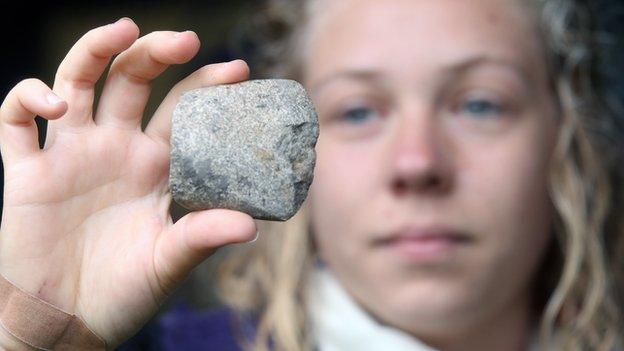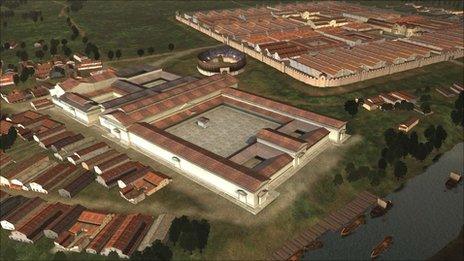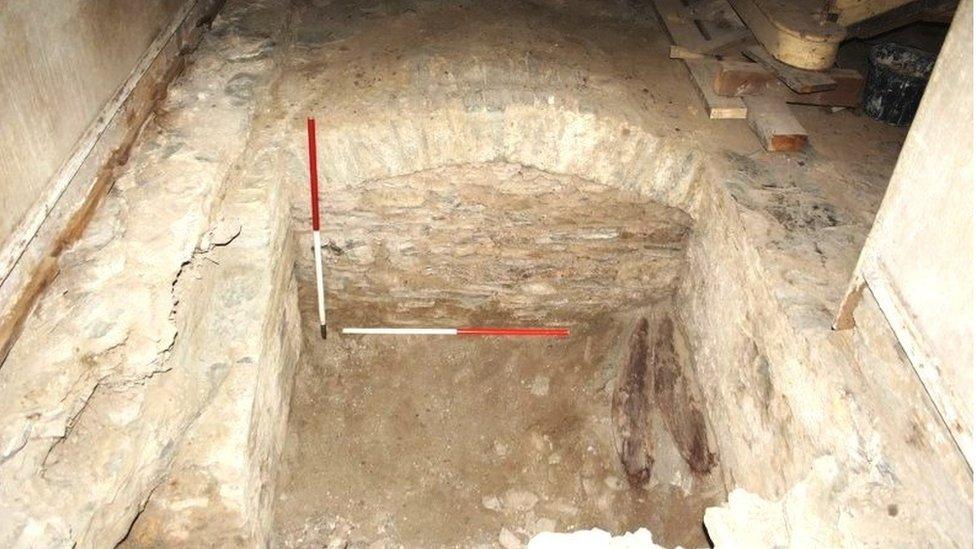Fort dig unearths 'evidence' Cardiff is 6,000 years old
- Published

This Roman brooch was unearthed during the latest excavation at Caerau Hillfort
The excavation of an Iron Age hillfort in Cardiff has revealed the "most compelling evidence yet" the city dates back 6,000 years, archaeologists said.
A dig at Caerau Hillfort revealed a Neolithic causeway enclosure and one of the largest collections of pottery from the period ever discovered in Wales.
Animal bones, stone axes, flint tools and a Roman brooch were also found.
Cardiff University archaeologists said the finds "surpassed" expectations.

Eluned Parrott AM and Dr Dave Wyatt are joined by a volunteer at the dig

This was among the artefacts discovered
More than 200 volunteers worked alongside the university's experts during the month-long excavation, which attracted 2,000 visitors.
It is the CAER Heritage Project's third season of excavation at the three-hectare (7.4 acre) site.
The scheme is a collaboration between Cardiff University, community group Action in Caerau and Ely (ACE) and nearby schools.
The causeway enclosure unearthed was said by the team to be very rare, with only a handful of others known to exist in Wales.
Dr Oliver Davis, of Cardiff University's School of History, Archaeology and Religion, said: "Excavations in 2014 had indicated that there may have been Neolithic activity on the hill, but the sheer scale of the site and preservation of this year's finds have surpassed our expectations and amazed the team, providing the most compelling evidence yet of the city's 6,000-year-old origins."

Flint tools and stone axes provide evidence of a Neolithic gathering place at Caerau, archaeologists say
He said the site was unlikely to have been a settlement, but rather a meeting place for some of Wales' first farmers to gather for "feasting, exchange and the performance of rituals".
Neolithic burial chambers have been discovered in and around Cardiff, including St Lythans burial chamber, near St Lythans, in the Vale of the Glamorgan, which is thought to date back six millennia.
- Published2 March 2013
- Published4 August 2011

- Published19 March 2014

- Published6 September 2013
